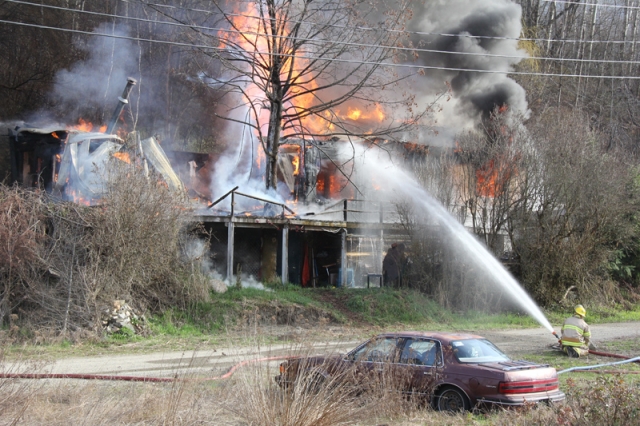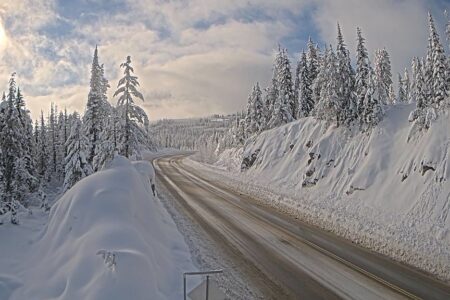RDCK firefighter remuneration report expected to increase fire service costs across regional district
The heat could be turned up on taxation in West Kootenay rural areas if recommendations from a firefighter remuneration report are accepted by the regional district board next month.
The Regional District of Central Kootenay board of directors is expected to deal with a report compiled by the Central Kootenay Regional Fire Chiefs’ Association that meets the legal requirements of fire protection, but incurs an increase in taxation some rural fire protection areas may not be able to afford.
Called the Proposed Changes to the Regional District Central Kootenay remuneration of Firefighters, the report was presented to the board by regional fire chief Andrew Bellerby in September, but will now come back to the board for a ruling November 17 with a further report from Bellerby for the board to consider.
The RDCK fire service is a volunteer-run service. Some remuneration is offered in the form of stipends and incentives to firefighters. However, there is currently no consistency in remuneration rates or in performance expectations throughout the service for receipt of remuneration.
This inconsistency and a motion by Area F director Tom Newell prompted a call for the report and action, said Karen Hamling, chair of the RDCK board.
“We all want the best for our volunteer firefighters, but I think it will be very difficult for small communities to be able to afford the funding as presented,” she said.
“Should referendums be required and subsequently fail, those services will be limited in the taxation they can raise and, as a result, will be limited in what they can afford.”
Community members have an expectation their volunteer firefighters are trained and supervised to return safely from incidents and training, said Hamling.
And that expectation comes at a cost.
The increased remuneration could cost up to $169,000 per year for a fire service area.
In addition to meeting the legal requirements of fire protection, the increase also improves recruitment, retention and succession planning for the RDCK fire service, reducing risk to homes and important infrastructure and increasing local employment.
By meeting the requirements of Fire Underwriters, insurance rates would stay as is. However, fire protection areas not meeting Fire Underwriters requirements have seen a tripling of insurance rates.
“But the directors need to consider their area and ability to pay (for the service),” said Hamling.
Fire Chiefs within each department are expected to meet legal and administrative requirements of service, manage budgets, manage a personnel of 15 to 25 volunteers, meet training requirements for personnel set out by local government, the Office of the Fire Commissioner and Worksafe BC.
As well, fire chiefs are expected to maintain fire halls and equipment, conduct recruitment and succession planning and ensure their fire department is able to provide response to incidents and maintain public safety within their protection areas.
These requirements frequently require fire chiefs to contribute significant time to their department, Bellerby wrote in the report.
“This has led to burnout of fire chiefs within the service and made succession planning difficult, which can lead to the appointment of under qualified or inexperienced fire chiefs in fire departments,” Bellerby stated in the report.
Where it comes from
According to the report’s findings, firefighters and officers are meeting increasing expectations with regards to training requirements, attendance and fitness to meet local government, the Office of the Fire Commissioner and Worksafe requirements.
In addition, the report has found that call volumes are increasing and many partners in a relationship both commute to work (sometimes long distances).
“This provides a challenging environment for firefighter recruitment, retention and succession planning,” Bellerby iterated in the report.
Bellerby explained that the Office of the Fire Commissioner Structure Competency Playbook requires team leaders for each department. However, those leaders require “additional competencies” in order to qualify them to instruct and guide firefighters at all incidents.
The report also found that weekend coverage in halls was compromised when firefighters work outside of the fire protection area.
One of the recommendations of the report was to meet WorkSafe BC and Playbook standards with fire departments appointing a duty officer or duty chief to provide team leader coverage every day, all hours of the day.
Leveling the field
Bellerby said based on a comparison of remuneration by other regional districts and municipalities in the province — attained through a questionnaire to all B.C. fire departments — it was recommended the RDCK discuss carrying out an operational review or adopt remuneration option one or two.
Remuneration option one would create a paid position of fire chief on a part to full time basis for each fire protection area or a sub regional area.
The position would be tied to a job description with set hours, requiring the chief to commit to the job performance requirements of the position.
However, remuneration rates honorariums, paid on call, hourly rates and duty officer/chief would be reduced in order to pay for the position.
Honorarium for all ranks with the exception of the fire chief would be paid, with paid-on-call/hourly rates of remuneration for response to incidents and attendance at practices and training for all ranks with the exception of the fire chief.
Remuneration to fire service instructors, as appointed by the regional fire chief would be paid, as well as remuneration to a duty officer/chief providing coverage to a fire protection area.
The second option would create an honorarium for all ranks at an increased rate from option one, with paid-on-call, hourly rates of remuneration to incidents and attendance at practices and training for all ranks would increase from option one.
Remuneration to fire service instructors — as appointed by the regional fire chief — and the duty officer/chief (providing 24/7 coverage) would increase above option one.
If the report recommendation for one of the two options is accepted, a referendum may be required for taxation.
Remuneration option one
- Remuneration option one, based on one part time chief, 15 firefighters and a call volume of 100 calls per year; total cost: $95,080.
- Remuneration option one, based on one full time chief, 25 firefighters and a call volume of 150 calls per year; total cost: $169,000.
Remuneration option two
- Remuneration option two, based on 15 firefighters and a call volume of 100 calls per year; total cost: $100,325.
- Remuneration option two, based on 25 firefighters and a call volume of 150 calls per year; total cost: $143,325.
Source: Regional District of Central Kootenay
























Comments